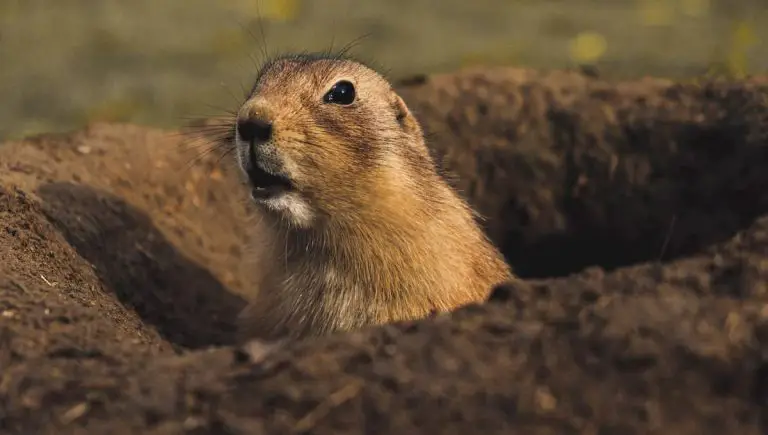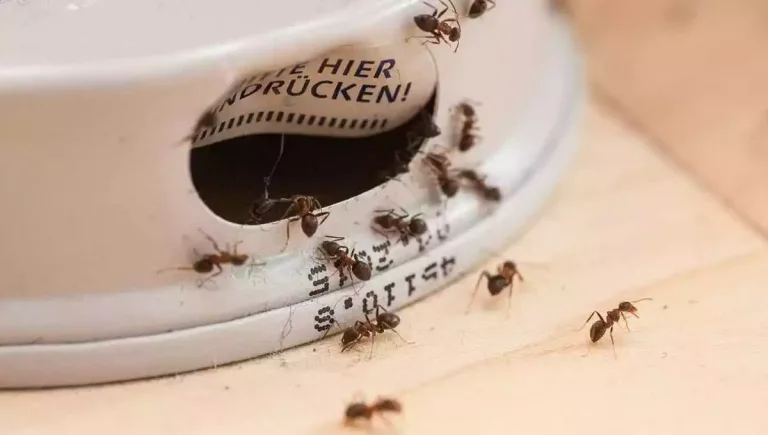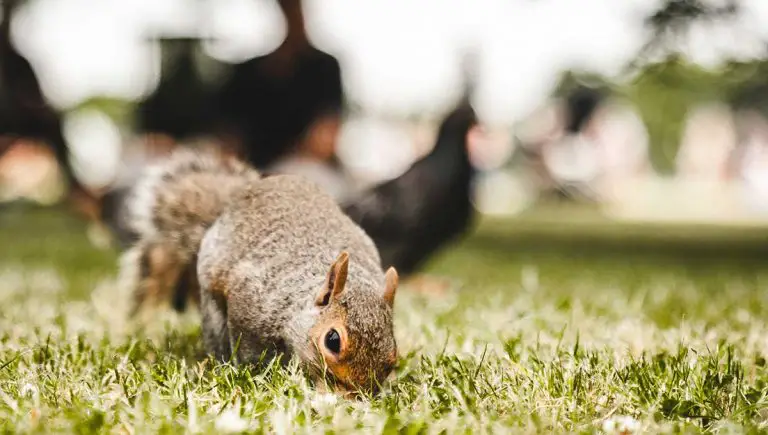Can Snakes Climb Walls? How to Keep Snakes Grounded

If you’ve ever encountered a snake in your home, next to feeling panicked or afraid, you might be curious as to how they got there in the first place. You may ask: can snakes climb walls?
The answer to this question might terrify people suffering from ophidiophobia (the heightened fear of snakes), because yes, some species are known climbers that can crawl into your first-floor apartment.
A slithering serpent is an uninvited and unwanted guest for many. However, assumptions about snakes being dangerous man-eaters are mostly unfounded in reality, the result of our vivid imaginations and our lack of knowledge regarding these mysterious creatures.
That said, the worst thing you can do is attack the snake or remove it without professional backup (or identifying the species first). All variants of snakes are scared of humans, and will attack when threatened or cornered.
Our goal is to equip you with an arsenal of information when it comes to dealing with these reptiles. This article will keep you informed about which kind of snakes climb walls and how, as well as preventative measures to prevent them from entering your home.
Can All Snakes in North America Climb?
Before you rush out to buy materials to snake-proof your home, it’s important to note that not all species of snakes can climb vertical planes (such as walls). Amongst those that can, many are non-venomous to humans and are only after their prey or are looking for shelter.
The general rule of thumb is that thin and long snakes are more capable of climbing because a snake’s body must fit within the grooves and cracks of a textured wall to propel them upwards – specific breeds of pythons and constrictors are too large to do this.
However, there are exceptions because the bull snake can climb walls, and it’s one of the most robust serpents of North America. The bull snake can steadily maneuver its way up to the roof in search of a bird’s nest, or to clear out a family of rodents in one sitting.
Sightings of the garter snakes are widespread, so if you do come across a serpent of this kind zigzagging up a brick wall, it’s likely to be one of these.
Tread with caution if you happen across a rattlesnake on your property because they aren’t regular household pests regarded as a nuisance, but are dangerous animals that could threaten your family and pets with their lethal bite.
Due to its ample size, they can’t climb walls, but can rattlesnakes climb stairs? This venomous serpent can, using its strong and muscular body. Otherwise, they can gain entry by creeping up tall trees that are positioned near open windows.
Why Do Snakes Climb Walls?
Snakes are carnivores that feast on a wide variety of prey, notably pests that squat in your homes, especially rodents.
Therefore, it stands to reason that snakes slither up walls to hunt, using their tongues to smell its environment and pick up scents.
Another reason a snake might crawl to higher spaces is to seek refuge from predators or the cold. In the wild, many serpents climb trees for food and sanctuary. Slithery reptiles that are brown and green can hide amongst the leaves and the branches of trees, invisible to animals that hunt them.
As mentioned, snakes may seek out warmth when it’s cold because they are ectothermic, meaning their body temperature goes up and down with their surroundings. Cold is bad news for a snake’s muscles, to the point where their senses become impaired, and they can’t hunt properly.
Having to thaw their muscles might explain their migration into your home or seeing them in plain sight, basking in the morning sunshine on your lawn.
With the advent of urbanization, higher numbers of pests and predators are hiding, living, and pursuing their prey indoors.
How Do Snakes Climb Walls?
Without possessing limbs, it seems an impossible feat that snakes can move the way that they do. Unlike other reptiles, such as geckos whose sticky feet can grip to any surface, snakes don’t have the anatomy to crawl about like other reptiles.
The body of a snake is made almost entirely from pure muscle. By using a combination of these muscles and the scales on their underbellies, serpents have the remarkable ability to push against and slither across the most challenging terrain using nine times their body weight.
The movement of a snake is two-fold. By angling its scales, the climbing snake grips onto the groves or cracks of a surface. Then using another part of its body, the creature crawls forward slowly.
How High Can Snakes Climb
This entirely depends on the type of vertical structure that they’re mounting. In the wild, serpents move with relative ease. In areas inhabited by humans, snakes can climb up uneven walls, given that there are platforms, similar to knobs and rough surfaces of a tree from which to push off.
That said, species can’t maneuver over smooth gradients without plummeting to the ground.
So if you’re wondering whether snakes can climb cement walls, then the answer is no. A serpent can’t move where there are no footholds to grasp at. That’s not to say they won’t attempt to, but they are more than likely to fall off trying.
These methods also apply to climb stairs. Snakes use their core muscles to lift their bodies while simultaneously moving forward using the base of the wall for support. The activity isn’t an easy task to navigate, but snakes are strong and powerful creatures.
However, what snakes can’t do is travel up staircases that are longer than the length of the bodies, and if they encounter 90-degree angles, they will probably abort their mission.
Identifying Snakes Commonly Found in the Household
Garter Snakes
Garden or garter snakes are non-venomous species found throughout America and could be in your yard and property right now. For the most part, garter snakes are beneficial to have around, eliminating plant-eating insects that ruin your garden.
However, you don’t want them wriggling around your living spaces. Some people might argue that snakes are nature’s pest control, but they can multiply and become a problem. While invasions are uncommon, a serpent’s den can make your home frightening and unlivable.
But can garter snakes climb walls to enter homes? Yes, they can. And if they can climb walls, can garter snakes climb stairs too? With difficulty. Garter snakes are agile reptiles who can move the weight of their bodies across elevated platforms.
While the species is mainly terrestrial, if they smell rats scurrying around your basement or other pests, they will find a way to reach their prey. You might have one hanging out in your home without your knowledge because they like to hide away from humans preying on insects and rodents.
There are several subspecies of garter snakes, which vary significantly in color – from yellow and orange to green and blue. However, you should be able to identify them by the distinct lines down the middle of their backs and on both sides.
A snakebite from these slithering creatures is non-poisonous, but their attack is unnerving to humans. When approached or cornered without a form of escape, snakes will lunge at the perceived threat and will do so repeatedly if they can’t flee from the situation.
Bullsnakes
As mentioned previously, despite being one of America’s most giant snakes, Bullsnakes will climb to reach their food supply, which includes various small mammals, such as rodents, squirrels, and rabbits, as well as birds and bird’s eggs. They can climb by pressing the scales found on their bellies against the rough edges of a vertical structure.
Despite being non-venomous, these snakes are often misidentified as rattlesnakes because they bear a similar resemblance to their poisonous counterparts. There are subtle differences between the two types of snakes, including a smaller head, and having paler coloring.
Wild bull snakes are irascible when cornered and terrified of humans. They will imitate rattlesnakes in various ways to protect themselves, including adopting the distinctive rattle noise and spreading their jaws to make their faces triangular-shaped, which is yet another distinguishing feature of rattlesnakes.
Often, these defense tactics backfire because humans, perceiving the bull snake as toxic and threatening, might try to kill the snake out of fear.
Rattlesnakes
Rattlesnakes are found throughout The States, but you are more likely to come into contact with one if you’re living in Southwest America and Mexico, near to dry, desert regions, but also around grasslands and rocky areas.
This breed of snake is dangerous, and you should take all the preventative measures necessary to keep them away from your home.
The good news is that rattlesnakes aren’t accomplished climbers. Still, they’re adept in finding other ways of entering your place of residence, so don’t be quick to rule out the possibility of one taking up residence in your household.
There are approximately 32 types of rattlesnakes, varying between one to eight feet.
Rattlesnakes or ‘rattlers’ live up to their namesake. When threatened, these vipers rattle their tails to warn predators, followed by a hissing sound that isn’t unlike the sound a cat makes when extremely distressed.
Sub-species of the snake come in a variety of colors and patterns, but some of the more universal telltale features that can help you to identify rattlesnakes include a flattened tail, a distinct triangular shape, vertical cat-like eyes and diamond-or-hexagonal shaped patterns found across the body against a lighter-colored background.
If you have reason to believe that you are sharing your home or yard with a rattlesnake, it’s imperative that you call wildlife conservation authorities to relocate your unwanted guest to prevent you or the animal from getting harmed.
Corn snakes
Corn snakes, also referred to as red snakes are non-venomous constrictors that are found across America. They are highly adaptable creatures that can live in a variety of areas, including wooded groves, rocky woodlands, meadowlands, and more.
These types of serpents are incredibly secretive who spend most of their time chasing rodents underground, away from humans. However, they are arboreal, meaning they can climb trees and will come out of hiding when following their prey.
These climbing capabilities allow them to ascend walls where needed. Their primary source of food is rodents, so if mice infest your home, you might be visited by corn snakes in the future.
As mentioned before, corn snakes don’t possess venom, which means they’ll squeeze their prey to death, and are even known to swallow them whole. While terrifying to a family of mice, these serpents are entirely harmless to humans. There’s no reason to panic if you get bitten by one of these species because their bites don’t contain venom.
You can spot them by their orange or brownish coloring, with alternating rows of black and white on their bellies and red blotches outlined by black down their backs. The checkerboard markings have a resemblance to maize, hence its name.
Besides Walls, What Other Surfaces Can Serpents Climb?
Snakes can move across the smallest of projections, which include window sills, boxes, and other similar structures.
Can Snakes Climb Vinyl Siding?
Snakes can move on vinyl sliding depending on the texture of the vinyl. It will be more challenging if there are fewer crevices on which the snake can latch.
Can Snakes Climb Stucco Walls?
Stucco is a highly-durable, low-maintenance plaster that people use to cover up parts of a wall that are less aesthetically pleasing, such as metal or cinder. Its rough appearance, considered a niche design, is also appealing to snakes that climb.
Can Snakes Climb Pipes?
Again, the answer depends on the pipes used, but snakes are likely to slide off smooth types. However, despite not being able to climb on pipes, they could climb in them.
Waking up in the middle of the night to find a snake swimming in your toilet is a nightmare situation. However, if you haven’t blocked off your pipe openings, they can slither their way through your ventilation system.
How Do I Keep My Home Free of Snakes?

Snakes play a pivotal role in our ecological system and are generally useful to have around. However, they can become a real problem if your home becomes their breeding ground.
Eliminate these slithering creatures from your home by doing the following:
You should handle serpents differently to other household invaders because some species are more poisonous than others. Trying to remove or kill them without knowing anything about the species could be detrimental for you.
Cover Gaps And Seal Crevices
Snakes can squeeze into small spaces; keep them out by covering openings, sealing cracks, and create physical barriers to keep creepy crawlies outside.
Holes are seen as an invitation to serpents, plug them with foam or mesh hardware cloth.
Keep Your Property Inhospitable To Snakes
A clean and tidy garden is of no interest to a snake because there are fewer hiding spots.
Snakes like to conceal themselves where there is debris, piles of leaves, and stacks of wood, but to name a few. An unkempt garden is a paradise for snakes because there are more places to hide away from predators and wait for unsuspecting prey.
Trim your bushes and cut back your vegetation to keep down the snake population in the neighborhood.
Manage Your Pest Problem
Keeping your personal space dust and dirt-free not only keeps away snakes but also their prey, and with their food sources in short supply, serpents have no reason to stay.
You might want to call in pest control if you’re experiencing a rodent invasion. Otherwise, prevent home invaders from encroaching on your space by practicing anti-pest hygiene, such as cleaning dirty dishes, removing old food, and closing trash cans.
Get A Dog
Snakes are sensitive to movement, sound, and vibrations, so a barking hound is likely to scare them off. However, bites from poisonous snakes could kill your beloved pet, so be careful about setting your dog against a hissing snake, especially if you live in an area populated by venomous species. This is something you should definitely keep in mind if you have dogs that sleep outside.
Using Repellent: Yes or No? You Decide
Snakes are hard critters to remove because there are no definitive approaches to eliminating them from your home. More often than not, repellent is ineffective in removing serpents because they grow used to the odor.
Not only are they unlikely to successfully remove the intended household invader, but a chemical snake repellent can be hazardous for humans and pets. Use all-natural repellents; instead, there are no guarantees that they’ll work, but it’s better than releasing harmful toxins into the atmosphere.
Naphthalene
Using naphthalene is not generally advised because your house could smell like mothballs for weeks afterward. At the same time, many have questioned its efficacy in deterring snakes.
Lemongrass
The scent of citrus is abhorred by various types of pests and may scare off snakes — plant lemongrass around the perimeter of your property, including entryways and near to walls.
Essential Oils
Essential oils, such as peppermint and cedarwood, are more commonly used to remove spiders and other types of pests than keeping snakes off your walls..
However, as an old wives tale suggests, snakes aren’t keen to have their scales covered in oil, and as a result, are less likely to ascend a wall sprayed with the stuff.
Recommended Snake Repellents
If you’re interested in which snake repellent our readers find useful, check out our favorites below…
Garden Secret
Repel snakes, moles, and other underground pests with Garden Secret, a powerful and chemical-free repellent. Enjoy gardening without the presence of unwanted yard invaders.
Snake Defense
Keep serpents away with a gallon of Snake Defense, a repellent that can be used on all types of snakes.
Pest Control Ultrasonic Repellent
Snakes, like other pests, are sensitive to vibrations that we can’t sense or hear. Eliminate them using Pest Cоntrol Ultrasonic Repellent.
Do Snake Traps Work?
For the most part, trapping snakes using bait won’t work because they are pure carnivores, which means that conventional sticky traps, the sickly-sweet scent of which attracts flies to their deaths, has little effect on a serpent.
Glue traps sometimes work, but it’s best to proceed with caution using this method of snake removal. As mentioned earlier, specific types of snakes are dangerous, and you don’t want to be making an unplanned visit to the hospital for a bite.
A Recap: Can Snakes Go Up Walls and How to Keep Them Grounded
They might strike immense fear in the hearts of many, yet we know too little about these curious creatures to warrant these feelings of terror. Snakes are remarkable animals that possess the ability to slither around limbless, using their extremely muscular bodies to propel them forwards.
In this article, we’ve asked and answered the following question: do snakes climb walls?
- There are species of serpents that have climbing abilities, so if you find a snake huddled in a dark corner in your upstairs bedroom, you’ll know why.
- Usually, slender snakes are more capable of moving their body weight than their rotund counterparts. However, in some instances, when there’s a will, there’s a way. The enormous bull snake is known to travel upwards to reach its food.
- Combining the sheer force of their muscles and scales to grip on rough surfaces, snakes can move across various landscapes without much difficulty. However, they do struggle to make headway on smooth areas and cemented walls.
- Why snakes climb walls is usually to locate food, such as rats, pests, and other small mammals. Other possible but less-than-likely explanations, include finding a mate and seeking protection from predators.
- Tips to keep your yard snake-free include making your property inhospitable is by cleaning up and trimming back shrubs and trees that allow for easy access into your home. A home with few hiding spots won’t appeal to a snake
- Physical barriers are becoming an attractive notion for homeowners in Southwestern states where rattlesnakes are an issue. Sometimes sturdy physical barriers are the only viable method of keeping dangerous animals away and your family safe.






